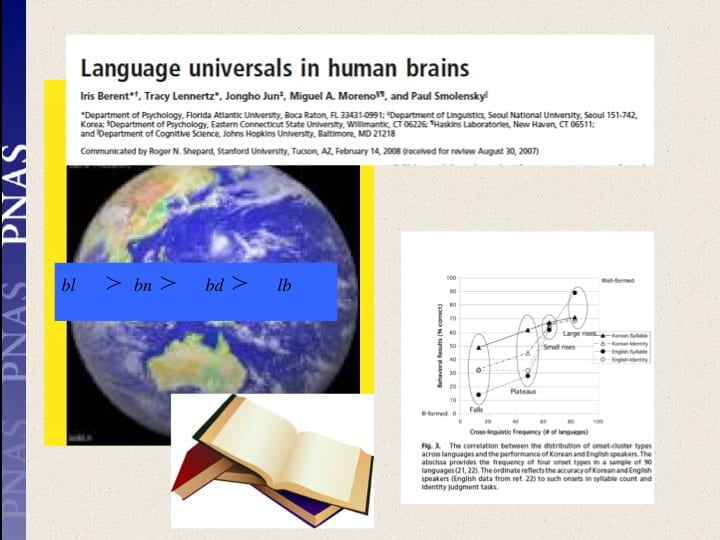The Phonological Mind
All languages – signed and spoken – weave words from patterns of meaningless elements. We contrast dogs and gods and favor blogs to lbogs. Phonology governs such patterns.
We form phonological patterns at birth; like songbirds, we do so spontaneously, even in the absence of an adult model, and we impose phonological design not only on our natural linguistic communication but also on invented cultural technologies – reading and writing.
Why are humans – young and mature – compelled to generate phonological patterns? And why do humans systematically prefer certain phonological patterns over others?
For laypeople, the answer seems self-evident: we blog, not lbog, because lbog is simply impossible for the articulatory motor system to produce and difficult for us to hear. Linguistic research, however, suggests an audacious alternative. Some patterns are preferred because humans are born with knowledge of language, endowed with abstract rules of phonology. People, then, weave phonological patterns for the same phonological reasons for the same reason that birds sing their songs and migrate south.
Our research seeks to adjudicate between these explanations from two complementary perspectives. One line of research explores the restrictions on the phonological structure of spoken languages. We ask
- whether the phonological systems of different languages are governed by algebraic rules;
- whether some of those rules apply universally, and
- whether they are demonstrably dissociable from the constraints imposed by our motor and auditory systems.
Here is a demo of some of our recent research.
To further contrast phonological restrictions with “embodied” sensorimotor constraints, our research on Sign Language Phonology examines
- whether some phonological rules of spoken language might be shared with signed languages; and
- whether speakers spontaneously transfer their phonological knowledge from one linguistic modality to another.
